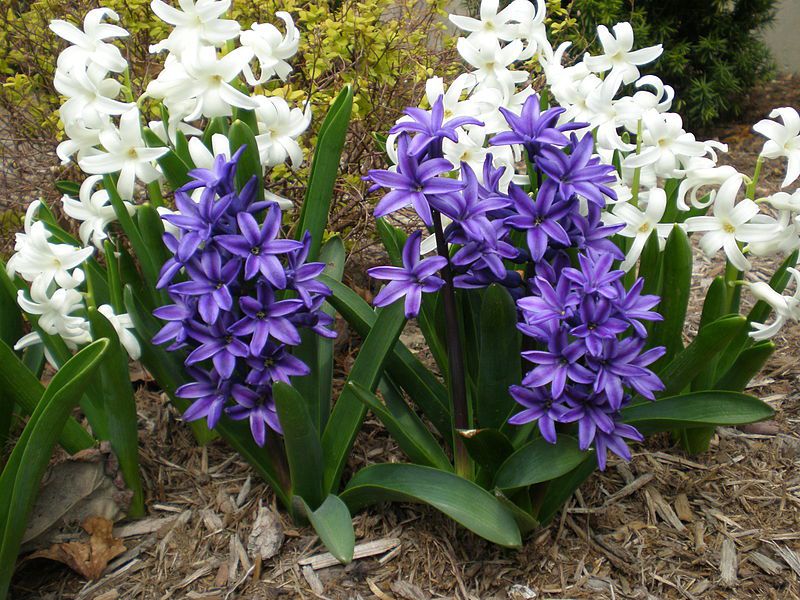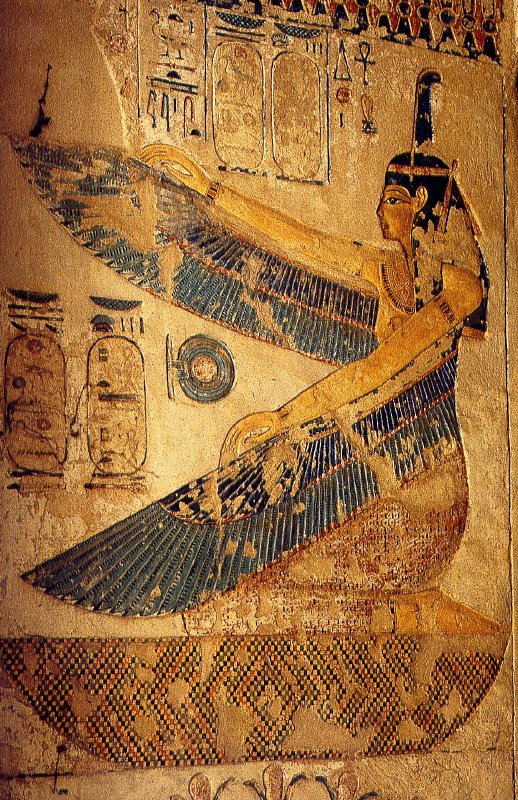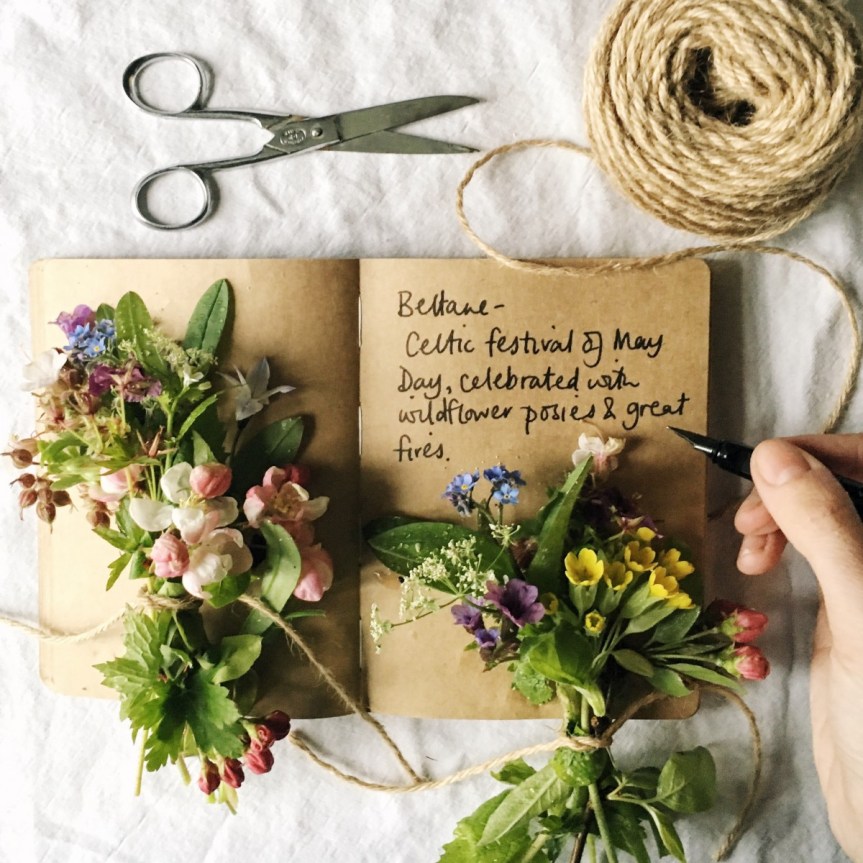Mainstream references will tell you that Maat was the ancient Egyptian concept of truth, balance, order, harmony, law, morality, and justice. Maat is a perfect example of how much knowledge we have lost about the ancients. Just like Osiris, Maat had nothing to do with death. She had to do with the underworld. Everything we know about Maat has come from the patriarch minds of Lower Egypt. Her true symbolism is way more interesting.
First off you need to know that all the Princesses and Queens in Egypt held the title of Maakare. Even Hatshepsut held this title. When you break this down it becomes Maat, Ka, Ra. These women were very important priestess. The role of the priestess is said to be the Divine Adoratrice. Patriarchs will tell you that her role was to worship or adore the deity. They are simply being selective with the truth. The word they are using is ‘djuat’ and it can mean worship, adore or star. The truth is that she was the Star of the Gods. Out goes the image of a groveling woman on her knees and incomes the image of a woman who is so important to the gods that she is the star! Maakare literally means “Maat is the soul of Ra”. They try to cover this up by saying “Truth and Justice is the soul of Ra”. The truth and justice they are referring to are man-made laws. As you will see, they don’t know the true meaning of Maat.
Maat is sometimes portrayed with wings. In Egypt winged gods and goddess always represent non physical, abstract dynamics – Intellect, spiritual, imagination, psychic. You can’t mention Maat without the feather. The feather was actually the symbol for Maat. She was supposed to measure the feather of knowledge against the heart. What is going on here? What is actually being weighed? Maat is the goddess of truth, justice, balance and harmony, but not in the way you think. Maat is a goddess and goddesses could care less about man-made laws and order. Maat is about nature or the Laws of Nature. So the feather represents the laws of nature. Imagination is the knowledge of the heart. Weighing the feather against the heart is measuring purity, innocents, and harmony of Universe. Thoth weighing the soul is the knowledge of nature. The scales are weighing mind, body and spirit, matter.
This weighing did not happen after someone died. It happens when you enter the underworld or subconscious. In other words, she is there during the wake up process. Most people, if not all, fear the sacred feminine. They don’t understand it. All humans are in the masculine, but females are closer to the sacred feminine. They are the sacred feminine expressed in physical form, so of course they are closer to the sacred feminine. Our minds are 10% conscious and 90% unconscious. We are in the conscious mind all the time. This is what is meant by we only use 10% of our brains.
The patriarch Hyksos hijacked Maat and either out of ignorance or greed they said she measured your soul to get into paradise. It is written in the Papyrus of Ani that when people died they had to recite 42 negative confessions. The Papyrus of Ani was written by the scribe Ani, a Hyksos sympathizer. He wrote these about the time they were kicked out of Egypt for the first time. They got the 10 commandments from these negative confessions, but instead of saying “I have not” they combined them and put “Thou shalt not”. In another text by Ani, called the Maxims of Ani, they got Jesus’ Sermon on the Mount and the Lord’s Prayer. To all you mainstream historians, theologians and researchers, your silence is deafening on this!
In truth Maat herself is the scales. She is bringing the ego to atonement. She is not crushing the ego. Once you find the goddess, the ego becomes an agent for her. Other cultures used the tip toeing goddess to symbolize walking the line of balance. This was not to make sure chaos never happened. The Upper Egyptians saw chaos as necessary because it started the wake up process. Chaos keeps you from becoming static. They did not see chaos as evil. Pain and struggle creates life. All you have to do is look at the birth of a child. Nature gives us the answers. The Lower Egyptians are the ones that made chaos evil. They are also the ones that created all the patriarch religions of today. Religions were created to keep you from meeting your higher self. Maat shows up at the beginning of the wake up process to see if a person is balanced enough to truly “wake up”. The goddess(sacred feminine) and self-love is the key to making it through the underworld. Maat is showing there is a need for order and balance, but everyone is different and needs to find their own individual balance. There is a need for moral law, but moral law should help people see the universal will and prevent people from dominating others. The moral laws we have today ensure that people are dominated and controlled.

I know there will be questions about Ammit. Ammit is supposed to be a female demon. She had a body that was part lion, hippopotamus and crocodile. Ammit lived near Maat’s scales. Supposedly if someone’s heart wasn’t pure, Ammit would devour it and the person could not go forward on their voyage. Once she swallowed the heart the person became restless forever. They were said to die a second death. I have shown before that the ancient Egyptians said the soul died when it entered a body or fleshy existence. Your soul died when you were born. This was considered the first death. When a person enters the wake up process, Maat weighs their heart with the feather of knowledge. If they have the sacred feminine or nature in their heart they could proceed. If the sacred feminine did not balance with the masculine, they don’t wake up and are restless. Because the person does not wake up they were considered to have died a second death. It is said that sometimes Ammit would stand by the lake of fire and she would cast the unworthy hearts in and destroy them. This has to be a later interpolation by christians because it is being compared to hell. In truth, fire is one of the four elements of consciousness. Fire is intellect. If Ammit is casting hearts in to the lake of fire, it is to get intellect or knowledge. The ancients thought ignorance was the greatest evil and there was nothing more precious than knowledge.
I’m not saying that people who don’t wake up are restless, but just look at the world. We live in a restless world by design. A racing mind is because our world is traumatic. If your mind is restless you can’t hear your higher self. I know my mind was pretty damn restless before I woke up. If you have truly ‘woken up’, for the most part your mind is at ease. It is what happens when you find your power. We all fall off the horse sometimes, but knowing your true power makes it easier to get back on. You have to conquer the masculine for the feminine to rise. Once you do, find your own balance. Get out in nature. She will help you find that balance. Nature is the living subconscious and nature is balanced. Maat is showing you to find the feminine principal in yourself. The sacred feminine is the forbidden fruit. Balance the scales by eating the forbidden fruit. Balance is the key to everything.









 Primary among these were the Japanese and English. The English took the art of keeping time with plants to an extreme with their experiments with a floral clock. A pet project of Carl Linnaeus, the floral clock, or watch of Flora, never worked quite as well as he has wished. […]
Primary among these were the Japanese and English. The English took the art of keeping time with plants to an extreme with their experiments with a floral clock. A pet project of Carl Linnaeus, the floral clock, or watch of Flora, never worked quite as well as he has wished. […]

You must be logged in to post a comment.